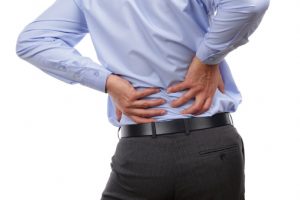 With all the treatments out there to aid in back pain, new research finds that steroid injections won’t offer much relief. There are many different reasons why someone may experience lower back pain. Causes of lower back pain – such as a herniated disk or spinal stenosis – are often treated with steroid injections.
With all the treatments out there to aid in back pain, new research finds that steroid injections won’t offer much relief. There are many different reasons why someone may experience lower back pain. Causes of lower back pain – such as a herniated disk or spinal stenosis – are often treated with steroid injections.
To test the effectiveness of steroid injections on lower back pain researchers reviewed 38 previous studies and concluded the research was not strong enough to support steroid shots to aid in lower back pain.
Advertisement
Lead researcher Dr. Roger Chou said, “These injections may not be as effective as perceived, and decisions should be based on an informed discussion of risks, benefits, and potential options, including surgery, medications and non-pharmacological options like exercise therapy.”
Chou added that lower back pain can improve over time, but those looking for quicker relief may opt for steroid injections.
Although steroid shots may offer short-term benefits, the research shows minimal improvement over the long-term. For patients with herniated disks, when compared to the placebo the steroid shots were only associated with small improvements a few weeks after the injection. In the long-term no improvements were to be seen.
Chou added, “The results appeared to be similar regardless of what type of injection technique was used, what steroid was used, the dose of the steroid, and other factors.”
Additionally, in those with spinal stenosis, the steroid injections showed no benefit. Spinal stenosis is the narrowing of the spinal canal, and steroid injections do not release the compression.
Researchers believe patients shouldn’t waste their time or money with steroid injections, but they think individuals with lower back pain may opt for this form of treatment due to a fear of surgery.
Advertisement
The American Chiropractic Association reports that at any given time 31 million Americans experience back pain. Back pain is the single leading cause of disability worldwide. Back pain can contribute to more days away from work and frequent trips to the doctor’s office.
The findings were published in the Annals of Internal Medicine.
